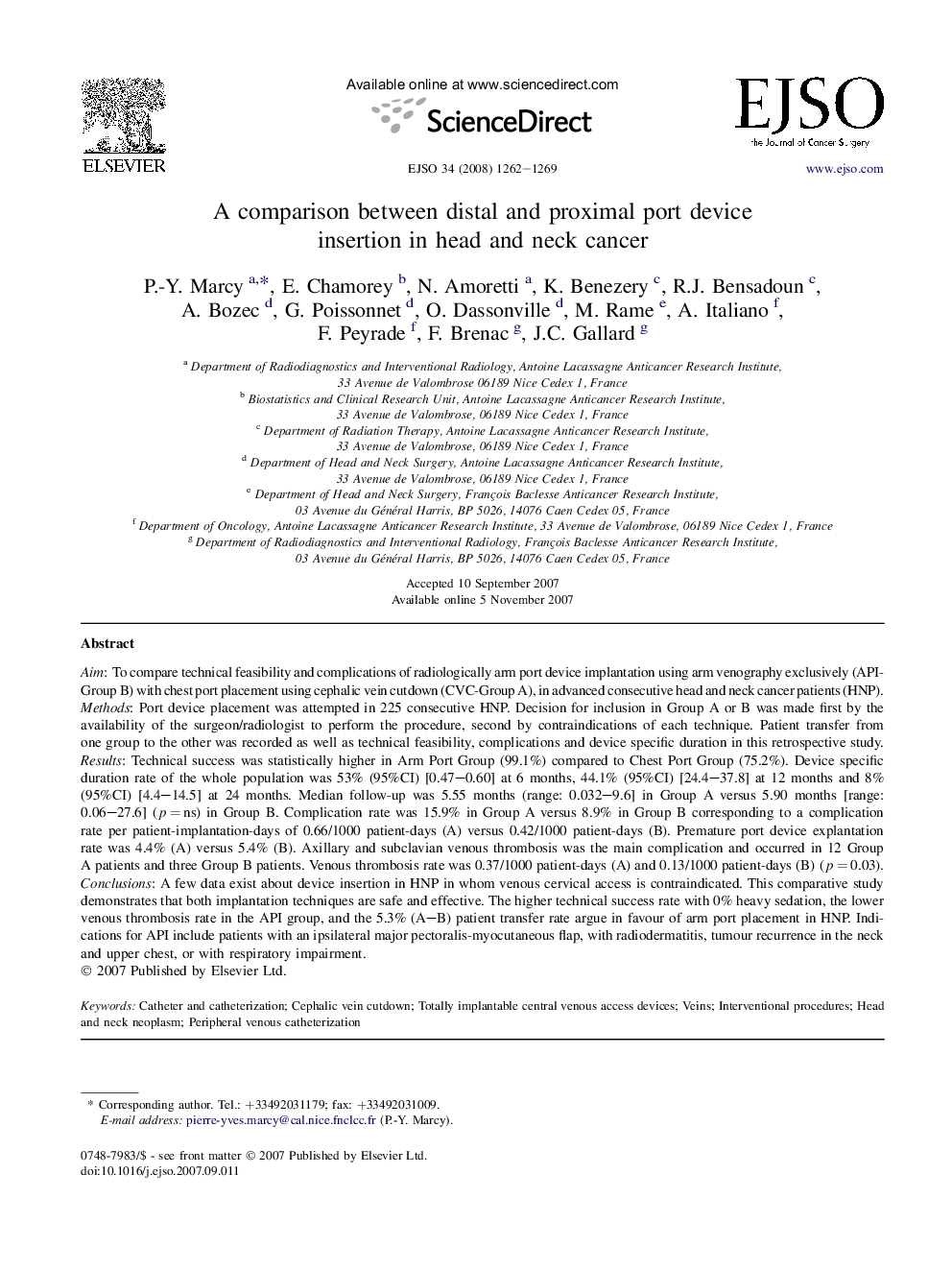| کد مقاله | کد نشریه | سال انتشار | مقاله انگلیسی | نسخه تمام متن |
|---|---|---|---|---|
| 3988089 | 1601458 | 2008 | 8 صفحه PDF | دانلود رایگان |

AimTo compare technical feasibility and complications of radiologically arm port device implantation using arm venography exclusively (API-Group B) with chest port placement using cephalic vein cutdown (CVC-Group A), in advanced consecutive head and neck cancer patients (HNP).MethodsPort device placement was attempted in 225 consecutive HNP. Decision for inclusion in Group A or B was made first by the availability of the surgeon/radiologist to perform the procedure, second by contraindications of each technique. Patient transfer from one group to the other was recorded as well as technical feasibility, complications and device specific duration in this retrospective study.ResultsTechnical success was statistically higher in Arm Port Group (99.1%) compared to Chest Port Group (75.2%). Device specific duration rate of the whole population was 53% (95%CI) [0.47–0.60] at 6 months, 44.1% (95%CI) [24.4–37.8] at 12 months and 8% (95%CI) [4.4–14.5] at 24 months. Median follow-up was 5.55 months (range: 0.032–9.6] in Group A versus 5.90 months [range: 0.06–27.6] (p = ns) in Group B. Complication rate was 15.9% in Group A versus 8.9% in Group B corresponding to a complication rate per patient-implantation-days of 0.66/1000 patient-days (A) versus 0.42/1000 patient-days (B). Premature port device explantation rate was 4.4% (A) versus 5.4% (B). Axillary and subclavian venous thrombosis was the main complication and occurred in 12 Group A patients and three Group B patients. Venous thrombosis rate was 0.37/1000 patient-days (A) and 0.13/1000 patient-days (B) (p = 0.03).ConclusionsA few data exist about device insertion in HNP in whom venous cervical access is contraindicated. This comparative study demonstrates that both implantation techniques are safe and effective. The higher technical success rate with 0% heavy sedation, the lower venous thrombosis rate in the API group, and the 5.3% (A–B) patient transfer rate argue in favour of arm port placement in HNP. Indications for API include patients with an ipsilateral major pectoralis-myocutaneous flap, with radiodermatitis, tumour recurrence in the neck and upper chest, or with respiratory impairment.
Journal: European Journal of Surgical Oncology (EJSO) - Volume 34, Issue 11, November 2008, Pages 1262–1269